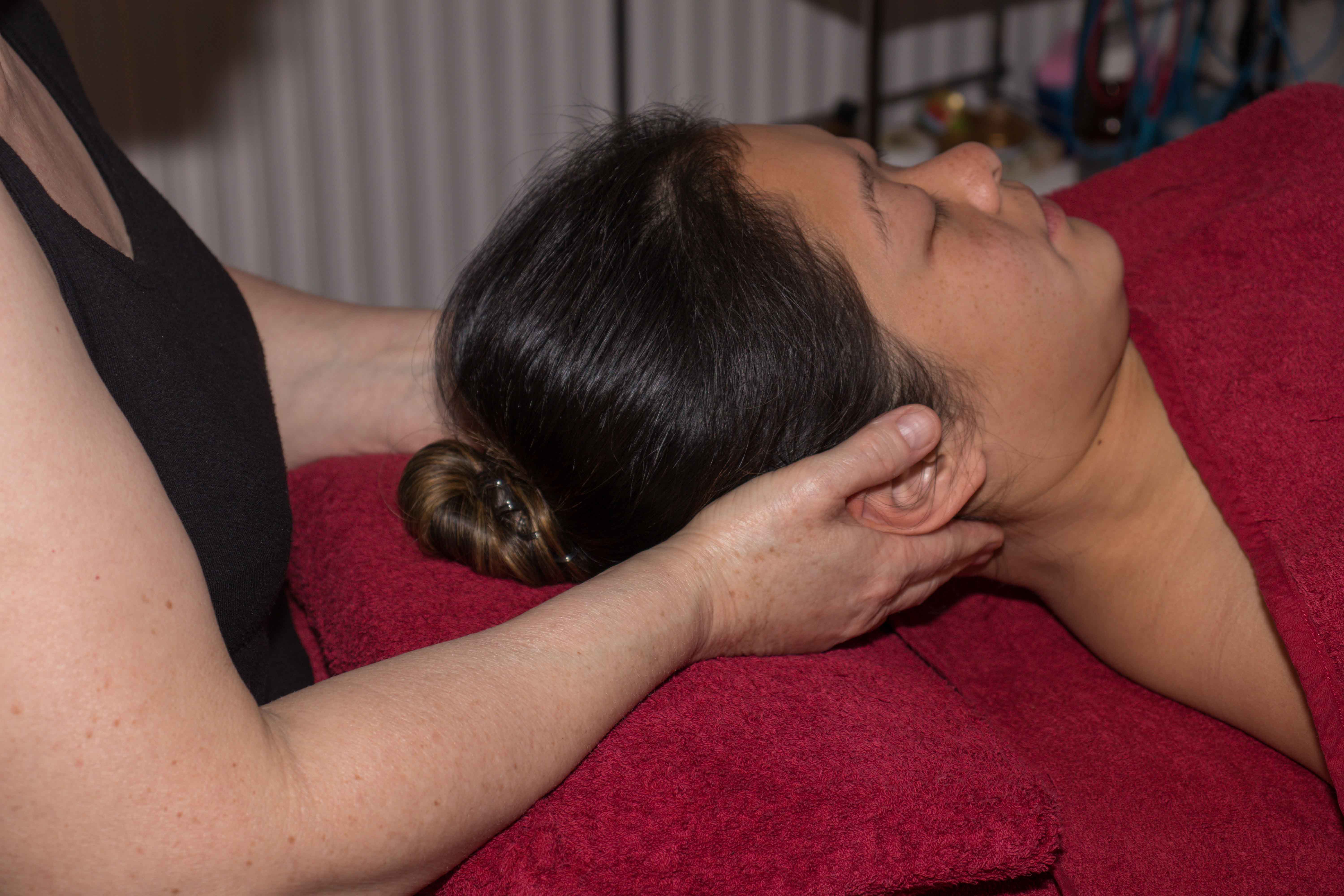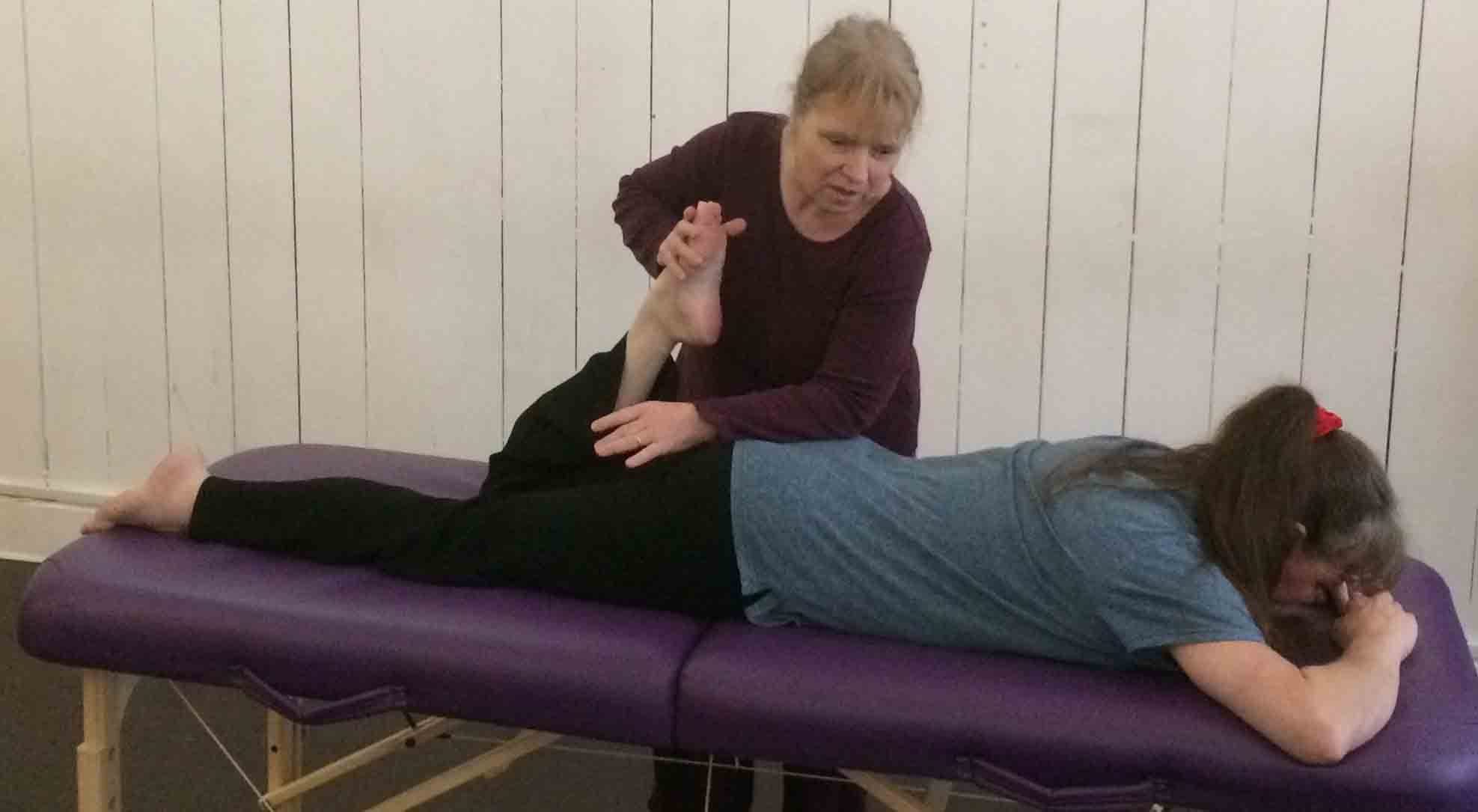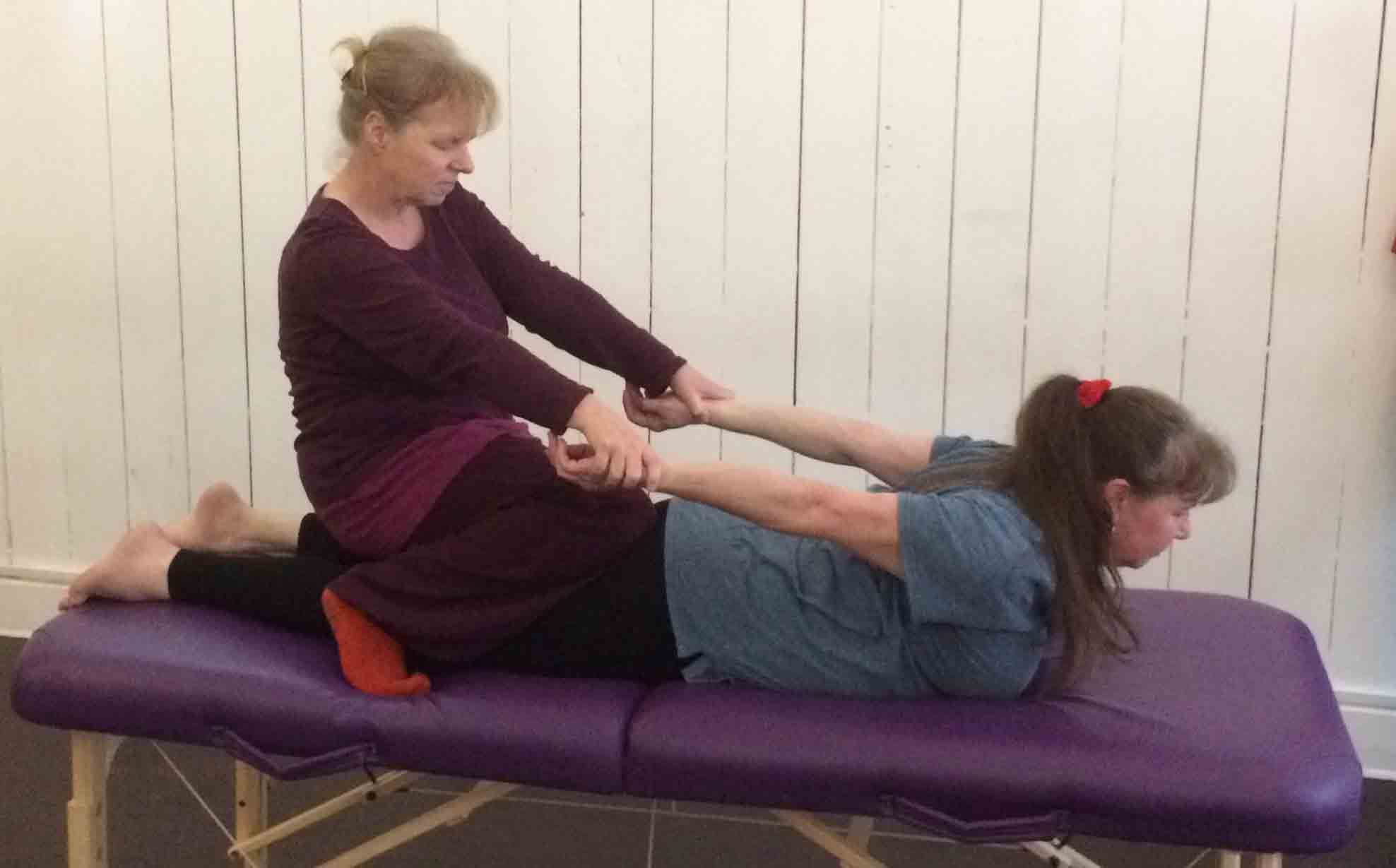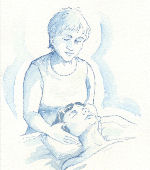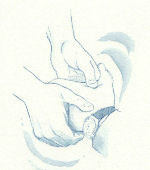Myofascial Release
Myofascial release (MFR) is awesome. That is what I came away with from my initial intensive MFR training. It is also the word (over)used by one of our wonderful trainers. Other popular words were "s" words, such as splendid, super, safe, spontaneous, succulent, special, sublime, serene.
A few years on, I can confirm this in my practice.
"Got up this morning with a pain free back in over a decade."
Jane after one session of MFR.
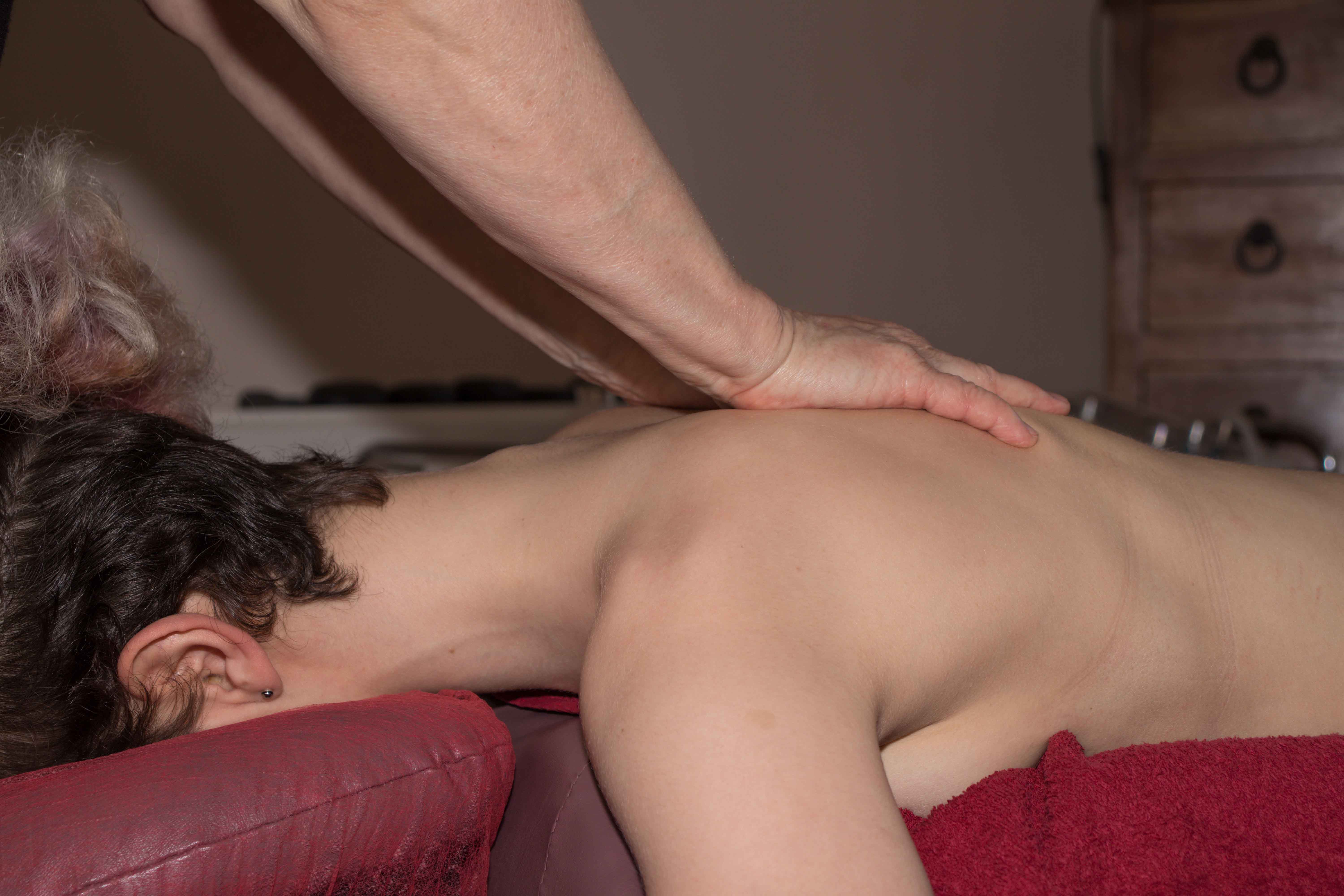
You can reach Touching Well by mobile: 0794 227 6538, or via our landline 0115 648 9636, or the contact form.
Opening times: Monday to Thursday daytime
I hope to see you soon. With warm regards, Regina
What is Myofascial Release?
Myofascial Release is a safe and very effective hands-on technique. It involves applying gentle sustained pressure into the fascial restrictions to eliminate pain and restore motion.
"I could even feel my organs relaxing"
Hazel, Beeston, Nottingham
What is fascia?
Fascia is the tissue that surrounds and connects all the structures in our body. We are about 70 trillion cells — neurons, muscle cells, skin cells, dozens of different cell types — all working together. Fascia is the continous three dimensional web that enables this by holding everything in its proper place. It covers and weaves into every muscle, bone, nerve, artery and vein, as well as all of our internal organs including the heart, lungs, brain and spinal cord, everything. Our fascia weighs, on average, about 12.5 kg with about 250 million nerve endings in the fascial net.
What is myo?
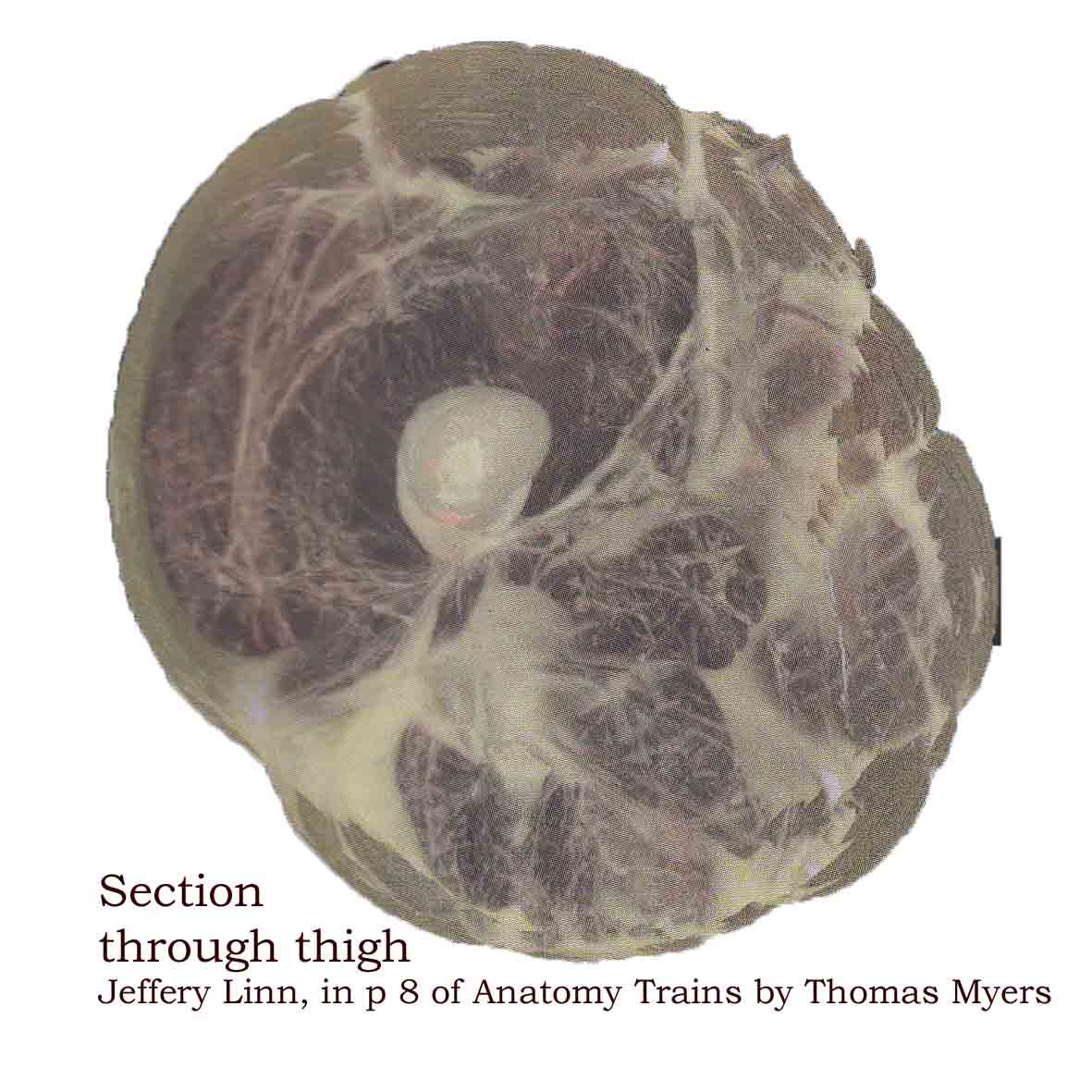
'Myo’ means muscle and ‘fascia’ means band. Myofascia (pronounced "my o faasha") is the fascia that surrounds and covers all our muscles. Myofascia surrounds our muscle bellies, holding them together and separating them into functional groups. Portions of fascia penetrate into the muscle belly and encase each tiny muscle fibre. Did you know that the muscle fibres without the fascia have the consistency of jelly? Fascia also fills the spaces between muscles.
An example of myofascia would be when you remove the skin from a chicken breast, that white filmy tissue underneath the skin is myofascia and in a living state is very strong.
How is our body held together?
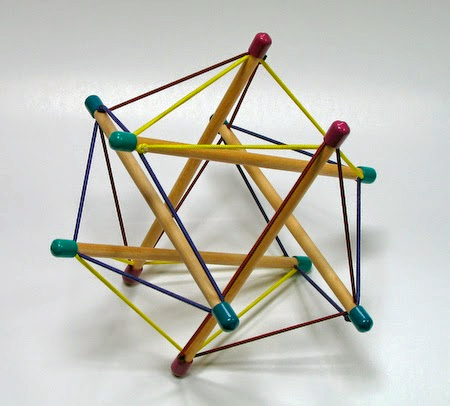
Most of our houses and other human-made structures are designed around compression, their integrity lies with the continuity of compression from the roof to the foundation of a building, it runs in an unbroken line from element to element all the way to the ground. We used to think that our bodies worked in the same way: the skeleton as a stack of bones – a continuous compression structure – with the individual muscles hanging off each bone to move it. But that is not how we work, we would literally fall apart.
Our bones float in a sea of soft-tissue. Our fascia acts like a continuous inwards pulling tensional network, with the bones acting like the "sticks" in the model, pushing out against the restricting "rubber bands". (My children had a teething toy like the model.) This means that force will be distributed all over the structure, in our case, our body.
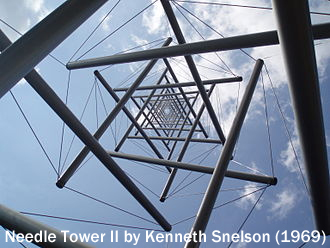
This is called tensegrity, combination of "tension + integrity".
Buckminster Fuller, inspired by the sculptures of Kenneth Snelson, coined this term to indicate that the integrity of a structure is derived from the balance of tension between elements, rather than from compression. Think teething toy, not house. This concept was applied to the human body by Tom and Steven Levin. Of course it has lots of practical implications in terms of massage and bodywork.
What is fascia like?
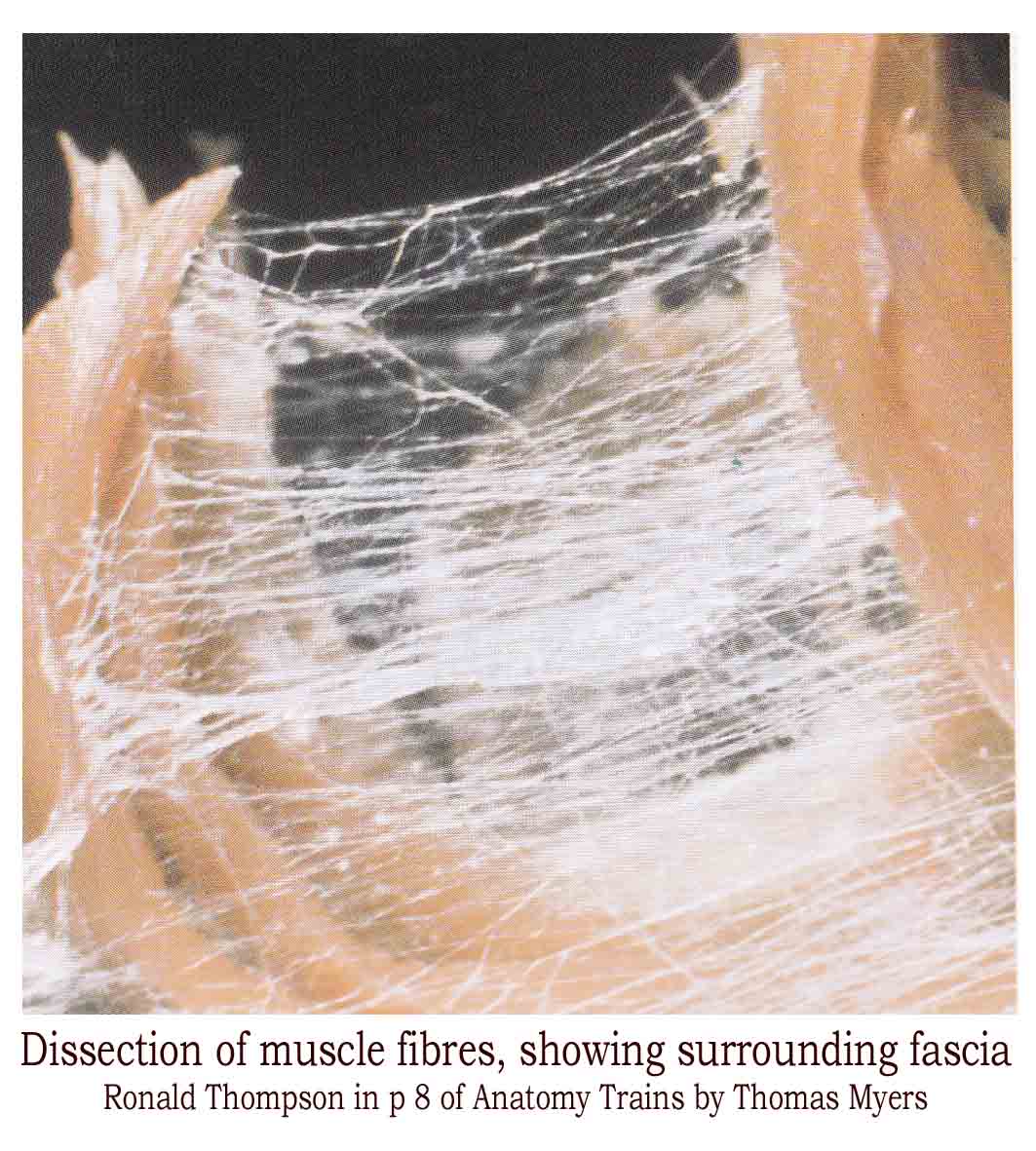
Under a microscope myofascia resembles a spider web or fish net. In a healthy state it is organized and flexible, relaxed and waxy in configuration. It can best be described as a complete body suit which runs from the top of your head down to the bottom of your toes. It is continuous and has no beginning or end and can be found almost everywhere in our bodies.
Like yarn in a sweater
our entire body is connected to every other part of our body
by the fascia. It is a continuous weave of material. And like
a pull in a sweater, damage to an area of myofascia can effect
other distant areas in our body even years later. It has recently (2019) been discovered that fascia actively contracts, for example after a trauma, and can do so for long time afterwards. This is a slow process (unlike a cramp) with low forces, but over time this adds up, as anyone who had a frozen shoulder can tell you.
When we
experience trauma, scarring, or inflammation, the fascia loses its
pliability. It becomes tight, restricted, and a source of tension (apparently tensile pressures of
approximately 2,000 pounds per square inch on pain sensitive
structures) to
the rest of the body, a bit like a sweater that sticks to our
skin in some areas and is matted with blobs of dried paint in other
places (not a nice thought).
The good news is that MFR can un-stick our fascia, stretching and gently easing, encouraging us to move more freely.
A fascinating insight into fascia is on Gill Headly's videos. Pioneers of MFR are John Barnes and Ida Rolf.
"Over and over again, people come to me, and they tell me, You just don't know how strong I am. They say "strength" and I want to hear "balance". The strength idea has effort in it; this is not what I'm looking for. Strength that has effort in it is not what you need; you need the strength that is the result of ease." (Ida Rolf)
Tom Myers has developed Ida Rolf's ideas and applied them in his Anatomy Trains.
I have trained in a combination of these approaches, using both direct and indirect techniques. Common to all bodywork, but particularly to MFR, is to "listen to the tissues" and follow them.
You can contact me on 0115 648 9636 or 07942276538, or via the contact form.
If you have any questions or would like to discuss something in particular, then please feel free to get in touch.
I look forward to hearing from you.
Regina
P.S. You can also visit "Your Massage Questions" to ask any
questions or read other people's questions.
P.P.S. And if you have a story you'd like to share why not visit "Your
Massage Stories". You'll also
find other people's stories to enjoy.
P.P.P.S. To find out interesting massage related "bits and bobs" please subscribe to the Massage Message in the top of the right column.
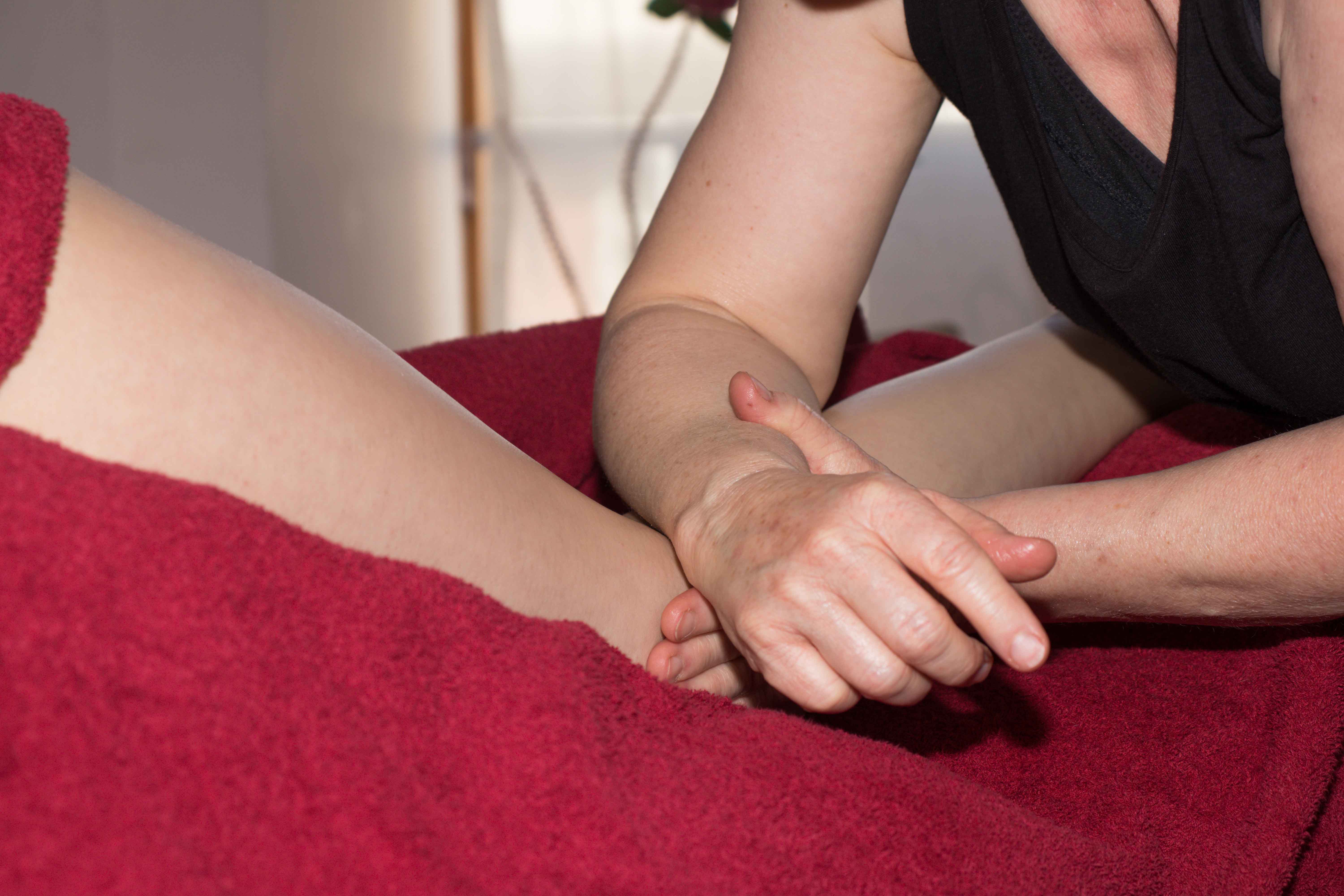
Special offer
Three sessions of Structural Integration, each lasting up two hours.
- balancing the legs
- balancing the pelvis
- balancing torso and ribcage
Each session individually cost £92, booked as a course of three, the charge is £250.
List of treatments
- Myofascial Release (MFR) - Saving Hands massage -
- Therapeutic massage - Maya Abdominal Therapy -
- Seated Acupressure - Indian Head Massage - Pulsing - Reiki -
- Reflexology - Tsuboki Foot Massage - Hopi Ear Candles -
- Hot and Cold Stone Massage - Myofascial dry cupping -
- Aromatherapy Massage - Aromatherapy Lymphatic Massage (ALM) -
- Fertility Massage - Pregnancy Massage - Post-natal Massage -
- Dorn Method - Breuss Massage -
- Manual Lymphatic Drainage (MLD) - Deep Oscillation -
- Treatment for lymphoedema - Treatment after cosmetic surgery -
- Holistic Facial - Face Vitality - Total Detox -
- Virtual sessions - Supervision
Subscribe to
my Free
Newsletter
Massage Message
Don't worry, your e-mail address is secure. I promise to use it only to send you the
Massage Message.
Recent Articles
-
Touching Well News
Dec 23, 24 06:00 AM
Wishing you joy, peace and wonder for the festive season. -
My body is more mobile
Sep 28, 24 12:12 PM
Excellent treatments. Regina finds the tension in my body and releases it. Consequently my body is more mobile and less painful. -
Supervision and Mentoring in Nottingham
Feb 21, 24 06:02 AM
Supervision and mentoring - Individuals and groups - in Nottingham and virtual
